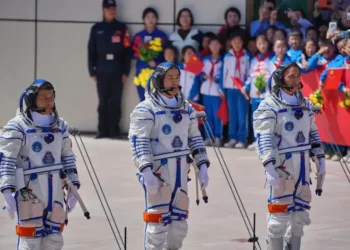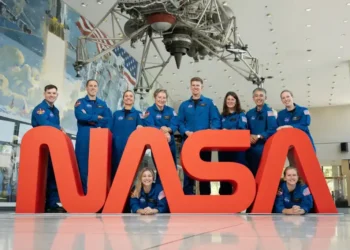Why It’s So Hot Even When Earth Is Farthest from the Sun
Earth Just Reached Its Farthest Point from the Sun—So Why Are We Sweating?
If you live in the Northern Hemisphere, you’ve probably noticed summer heat setting in. But here’s the twist: just as temperatures soar, Earth is actually at its farthest point from the sun.
At 3:55 p.m. ET on Thursday, our planet reached aphelion—the moment in its orbit when it is about 3.1 million miles farther from the sun than it is at its closest point in January. Sounds backwards, right? If we’re farthest away, shouldn’t it be cooler?
Not quite. The explanation lies not in Earth’s distance from the sun—but in the tilt of our planet’s axis.
It’s Not the Distance, It’s the Tilt
Earth rotates on a tilted axis—about 23.5 degrees—which has everything to do with our seasons. In July, the Northern Hemisphere is angled toward the sun, receiving more direct sunlight and longer daylight hours. That’s what creates the warmth of summer, not how close we are to the sun itself.
Even though Earth’s orbit is slightly elliptical, this difference in distance—just 3.3%—has only a minor effect on the amount of solar energy we receive.
So How Much Does Distance Really Matter?
When Earth is at aphelion in early July, it’s about 94.5 million miles from the sun. In early January, during perihelion, it’s around 91.4 million miles away. That 3.1-million-mile gap only translates to about a 7% difference in solar energy, which is minimal compared to the impact of axial tilt.
Let’s put that into perspective:
In cities like Houston, New Orleans, and Phoenix (around 30°N latitude), summer sunlight delivers twice as much energy as in winter.
In New York, Denver, and Columbus (near 40°N), solar energy jumps from 145 watts per square meter in winter to 430 watts per square meter in summer—that’s nearly a 300% increase.
So, while the sun’s rays are technically weaker in July due to Earth being farther away, the angle and duration of sunlight more than make up for it.
Tilt: The Unsung Hero of Seasonal Weather
Thanks to the Earth’s axial tilt, the Northern Hemisphere basks in sunlight for longer hours during summer months. The sun also climbs higher in the sky, allowing its rays to strike more directly, which intensifies the heat.
That’s why summer temperatures peak in July, even though we’re farthest from the sun at that time. Conversely, in January, when we’re closest to the sun, the Northern Hemisphere is tilted away, receiving less direct sunlight—and that means colder days.
Bottom Line: It’s All About the Angle
Earth’s distance from the sun changes only slightly over the course of a year, but its tilt is what really drives our seasonal shifts. That small 23.5-degree angle determines whether we’re basking in summer heat or bundling up for winter.
So next time you’re sweating under the July sun, remember:
It’s not how close we are to the sun—it’s how we’re facing it.
Quick Summary: Why It’s Hot When Earth Is Farther from the Sun
Earth reaches aphelion every July—its farthest point from the sun
The planet’s tilt, not distance, is what causes seasonal temperature changes
Northern Hemisphere tilts toward the sun in summer, leading to longer, hotter days
The difference in solar energy between winter and summer can be up to 300% in some regions
Distance only reduces solar energy by ~7%, making tilt the dominant factor
This article was rewritten by JournosNews.com based on verified reporting from trusted sources. The content has been independently reviewed, fact-checked, and edited for accuracy, neutrality, tone, and global readability in accordance with Google News and AdSense standards.
All opinions, quotes, or statements from contributors, experts, or sourced organizations do not necessarily reflect the views of JournosNews.com. JournosNews.com maintains full editorial independence from any external funders, sponsors, or organizations.
Stay informed with JournosNews.com — your trusted source for verified global reporting and in-depth analysis. Follow us on Google News, BlueSky, and X for real-time updates.













